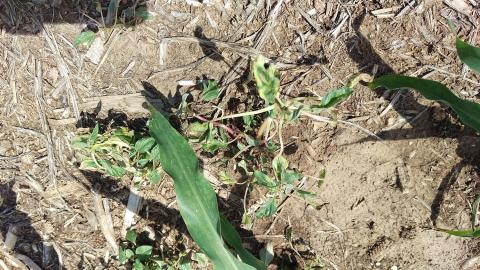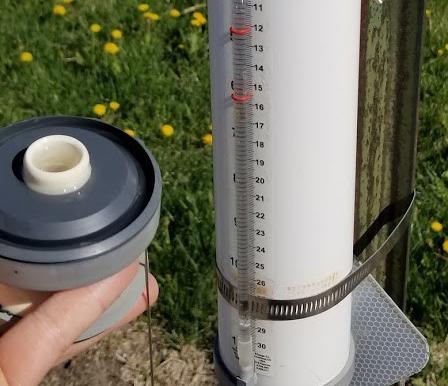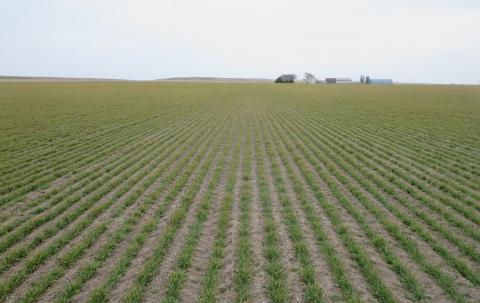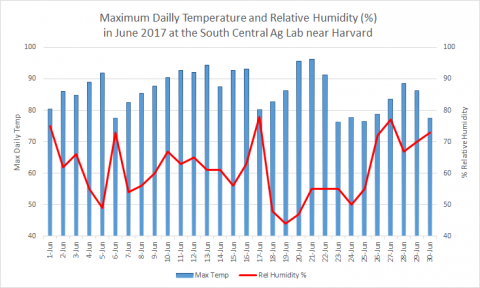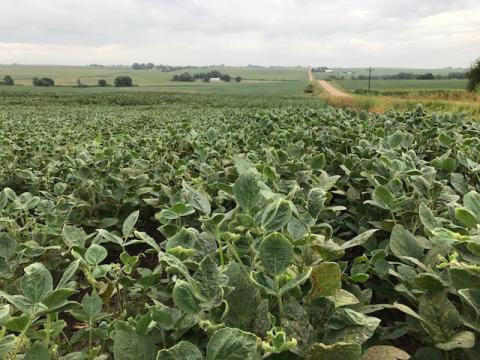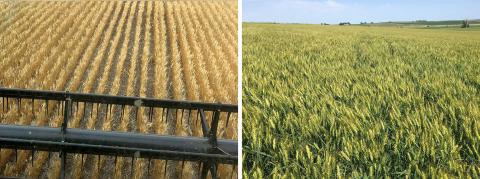
Recap of 2017-18 Eastern Nebraska Winter Wheat Crop
July 25, 2018
Winter wheat yields in eastern Nebraska were quite variable in 2018, ranging from 10 to 80 bu/ac, depending on precipitation. This review of the growing season examines some of the factors affecting yields in southeast, east central, and northeast Nebraska.
Considerations for Postemergence Dicamba-based Herbicide Applications to Corn
May 31, 2018
With postemergence herbicide applications occurring to corn, consider these best management practices to improve results and reduce the potential for off-target injury from your dicamba application.
Take Time to Set Up Nebraska Ag Water Management Equipment
May 23, 2018
As you finish planting, consider installing ETgages and soil moisture sensors before crop roots interfere. Then join the hundreds of farmers contributing their data each week to the Nebraska Agricultural Water Management Network, a valuable tool for managing your crop.
Winter Wheat Progress Across the State
April 26, 2018
Winter wheat in the Nebraska Panhandle continues to be rated above average with most of the wheat rated good to excellent. Winter wheat in the west central, south central, and eastern areas is more varied, as described in this wheat progress and condition report.
Potential Off-Target Dicamba Movement from Corn Applications
February 15, 2018
While the new soybean dicamba herbicides were often blamed for injury to sensitive plants in 2017, a deeper look at the timing of injury and the weather conditions at those times suggests dicamba applications in corn may have contributed to plant injury in many areas. Increased management for all dicamba applications will be needed in 2018.
Can We Manage Dicamba Applications in 2018?
February 15, 2018
Factors leading to dicamba injury and how growers will need to practice best management practices with all dicamba applications in 2018 to help reduce injury to susceptible crops and other plants. This article discusses key practices to implement.
Removing Dicamba Residues from Your Sprayer: A Tricky Task
February 15, 2018
Thoroughly cleaning your sprayer both before and after applying dicamba is required and can help reduce the potential for off-target damage. Check these recommended practices and see what research at Mississippi State University found when testing sprayer hoses.
Equipment Adjustments for Harvesting Soybeans at 13%-15% Moisture
September 15, 2017
When harvesting higher moisture soybeans, adjustments to your combine and your practices can help minimize challenges in the field, making it easier to achieve a recommended average soil moisture level of 13%.

